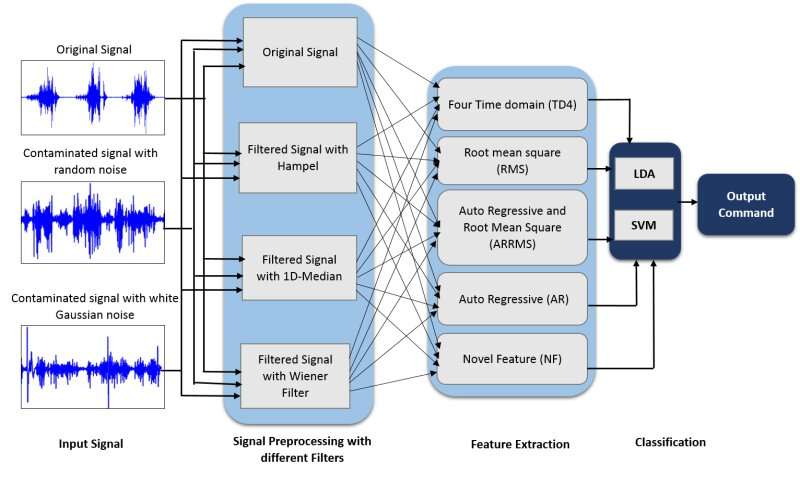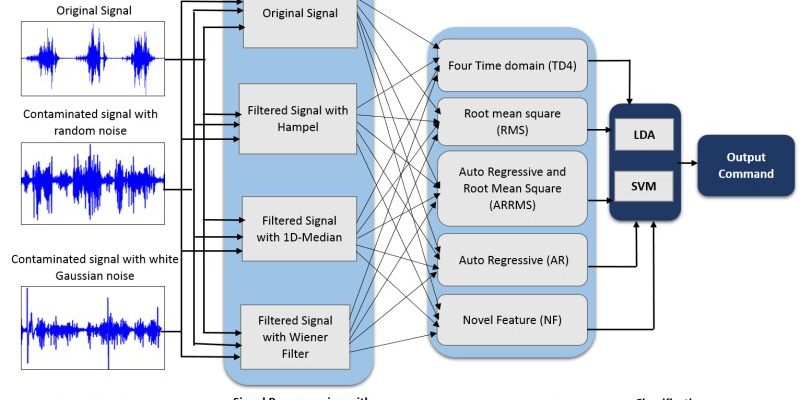
Myoelectric pattern recognition (PR)–based strategies have been applied to control upper limb prostheses. However, transhumeral amputees often lack the requisite residual muscles to produce high-quality electromyogram (EMG) signals that are essential for intuitively controlling their prosthetic device.
A research group led by Prof. Chen Shixiong and Assoc. Prof. Oluwarotimi Williams Samuel from the Shenzhen Institute of Advanced Technology (SIAT) of the Chinese Academy of Sciences has proposed an optimized technique based on Wiener filter to enhance high-density surface EMG signals.
This technique could realize precise motion intent decoding in the context of upper limb prostheses control. The study was published in Biomedical Signal Processing and Control on Jan. 18.
The researchers explored the capability of different filtering techniques (including Hampel, 1-Dimensional Median filter and the proposed Wiener filter) in denoising transhusmeral amputees’ EMG signals to yield adequate PR-based control for prosthetic devices.
Source: Read Full Article
